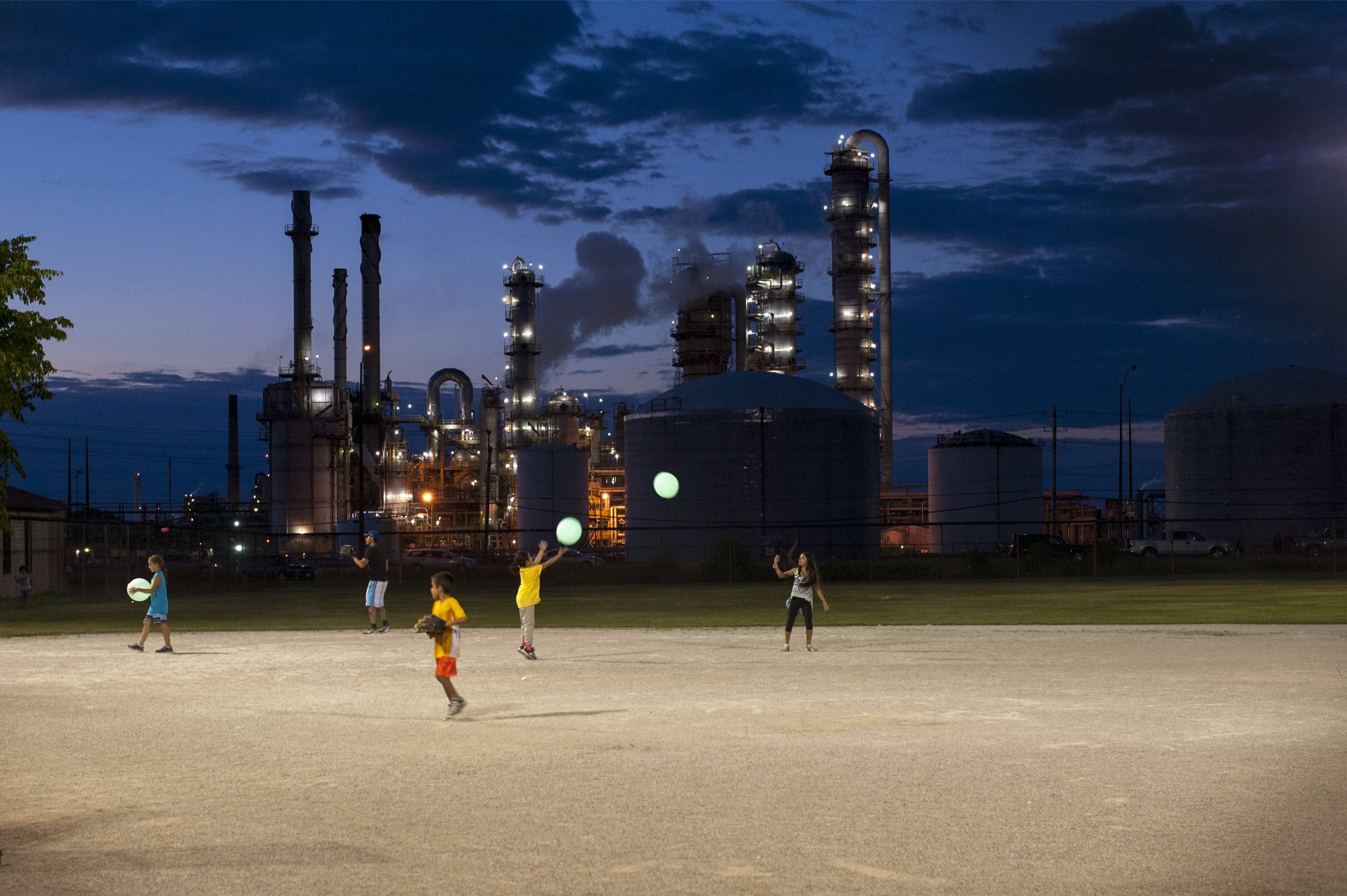Toxic images: Visual representation of industrial pollution and frontline communities
Aamjiwnaang First Nation, an Anishinabek community impacted by Chemical Valley—Canada’s densest concentration of petrochemical manufacturing—appears in the news intermittently when concerns for the health and environmental consequences of industrial contamination (re)surface. In these instances, media interest amounts to a secondary form of exposure. Bodies, natural and human, are first exposed to the toxins released by extractive industries. News reporting exposes them once again, this time to the scrutinizing gazes of photojournalists, which shape how they are then seen, understood, and engaged with by the wider public. Grounded in an understanding of environmental injustice as a manifestation of colonial racial capitalism’s right to maim, this dissertation probes how Aamjiwnaang First Nation has been depicted in Canadian news media. By being attuned to the haunting capacities of photographs as well as the breadth of the imperial scopic regime, I consider how pictures of Aamjiwnaang First Nation assist and create ruptures in narratives that cast a territory and its inhabitants as acceptable sites for environmental harms. Through a participatory approach to visual discourse analysis, which engaged Aamjiwnaang residents in dissections and discussions of images of their community and concerns published in local, provincial and national news outlets, participants articulated their vision of what representational justice would look like for them. They stress the need to resist “half-truths” by finding an equilibrium between portraying the negative realities of industrial pollution and emphasizing the beauty of the First Nation and the strength of its culture. In thinking through this balancing act, Aamjiwnaang community members articulate how photographers, newsrooms and, by extension the public, can witness environmental harms without reinscribing the dominant narrative of bodies and lands exposed to industrial pollution as damaged. Alongside them, in this dissertation, I argue that refusing such extractive views is necessary to unsettle perspectives that construct racialized lives and places as ungrievable, wasted and, therefore, primed for continued contamination.
Elaborated images as decolonial praxis
As a visual research method, elaborated images can be understood as a mode of photo elicitation, which uses images as prompts during interviews. Much like in photo elicitation, participants are asked to reflect on the content and composition of the photograph as well as explain the feelings and memories it evokes. However, they do so directly onto the image, rather than rely on the researcher to create a distinct textual record of the conversation. Rather than an image and its interpretations living side-by-side, the two now intertwine in such a way that they become indissociable. The image cannot be viewed without registering the annotations, revisions, additions, or subtractions that were made to it. In this way, the polysemic nature of photography, how it invites multiple interpretations and allows for their coexistence, is laid bare. Consolidated onto a single frame, the inscriptions point to the multiple ways to engage and understand the image, thereby reflecting its inherent polysemy. A span of dialectical relationships manifests itself through the annotations. The dialogue may be one of assent, where the annotator builds on and amplifies all or part of the message carried by the frame. On the other end of the spectrum, it could convey dissent, offering amendments or rectifications to the representation. Most often, the dialogue exists somewhere in between, providing evidence that a photograph, while indexical, is not gospel.

